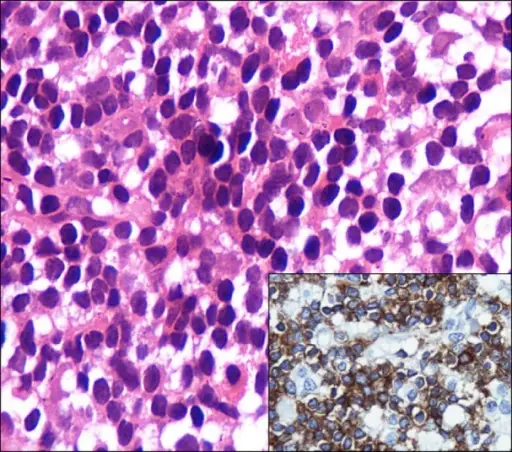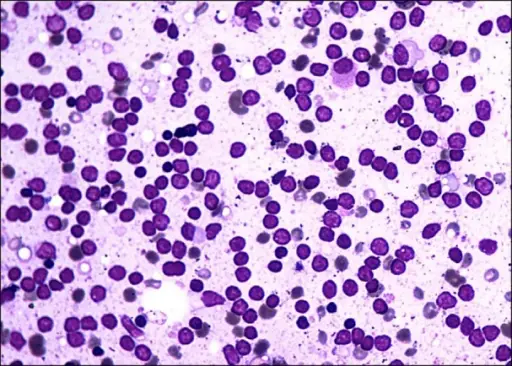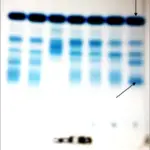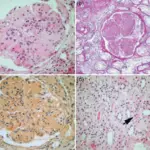Waldenstrom macroglobulinemia is a type of non-Hodgkin lymphoma (NHL). The neoplastic cells make large amounts of an abnormal protein (called a macroglobulin). Another name for WM is lymphoplasmacytic lymphoma.
What is the Pathology of Waldenstrom Macroglobulinemia?
The pathology of Waldenstrom macroglobulinemia is:
-Etiology: The cause of Waldenstrom macroglobulinemia is not definitely known. Environmental familial, genetic, and viral factors have been reported.
-Genes involved: MYD88 gene
-Pathogenesis: The sequence of events that lead to Waldenstrom macroglobulinemia is preceded by an IgM monoclonal gammopathy of undetermined significance (MGUS) in most, perhaps all, patients.
-Histology: The histology associated with Waldenstrom macroglobulinemia shows the bone marrow containing variable numbers of pleomorphic lymphoid cells. Dutcher bodies may be seen as intracytoplasmic inclusions positive for periodic acid Schiff. Mast cell hyperplasia is common and may stimulate tumor cell proliferation and monoclonal IgM secretion. Blood smears show striking rouleau formation and occasional to frequent plasmacytoid lymphocytes which bear surface monoclonal IgM, usually κ, detected by flow cytometry.
How does Waldenstrom Macroglobulinemia Present?
Patients with Waldenstrom macroglobulinemia are more often male than female, and present at a median age of 63 years old. The symptoms, features, and clinical findings associated with Waldenstrom macroglobulinemia include insidious weakness, and mucous membrane bleeding. Some patients may have infections, dyspnea, and congestive heart failure. Physical examination may detect pallor, purpura, lymphadenopathy, hepatosplenomegaly, and engorged retinal veins.
How is Waldenstrom Macroglobulinemia Diagnosed?
Waldenstrom macroglobulinemia is diagnosed by a blood test that shows an increase in IgM on protein electrophoresis associated with ≥10% clonal lymphoplasmacytic cells in bone marrow aspiration biopsy.
How is Waldenstrom Macroglobulinemia Treated?
Waldenstrom macroglobulinemia may be treated by combination therapy with rituximab and bendamustine.
What is the Prognosis of Waldenstrom Macroglobulinemia?
The prognosis of Waldenstrom macroglobulinemia is good. The five-year survival rate of Waldenstrom’s macroglobulinemia is about 80 percent. Recent studies suggest that the median survival rates are 16 years after diagnosis. This, plus the fact that people with Waldenstrom macroglobulinemia tend to be older when diagnosed, puts their survival rates closer to those expected for the general population.






